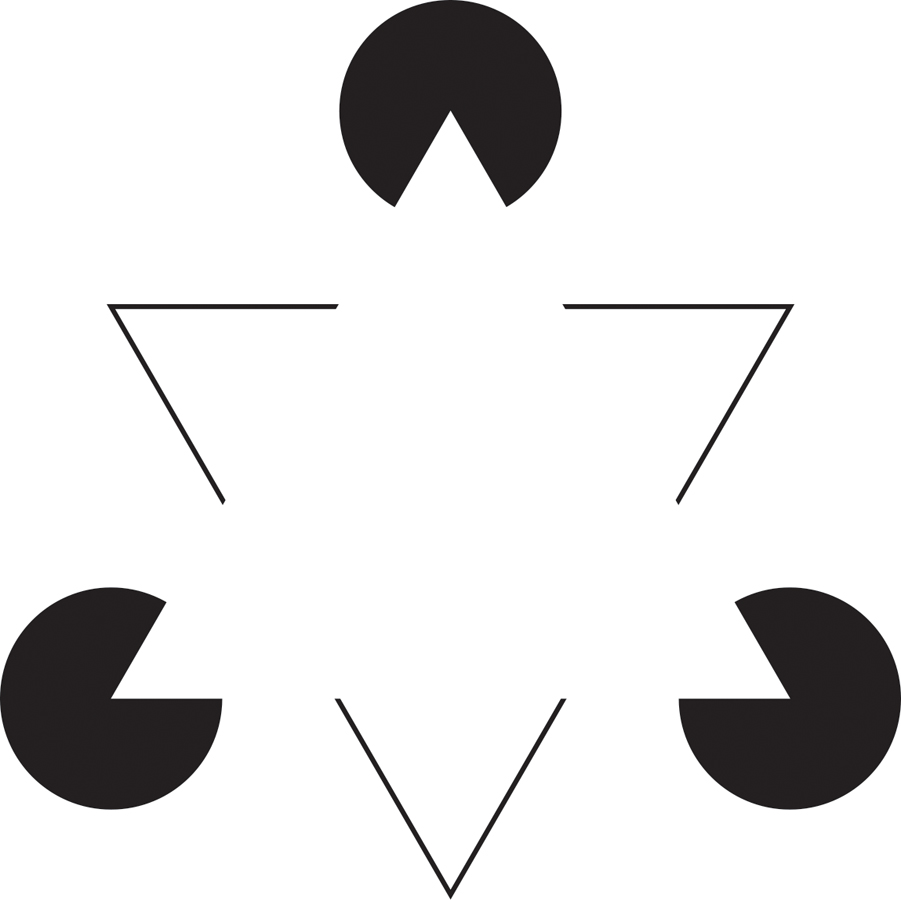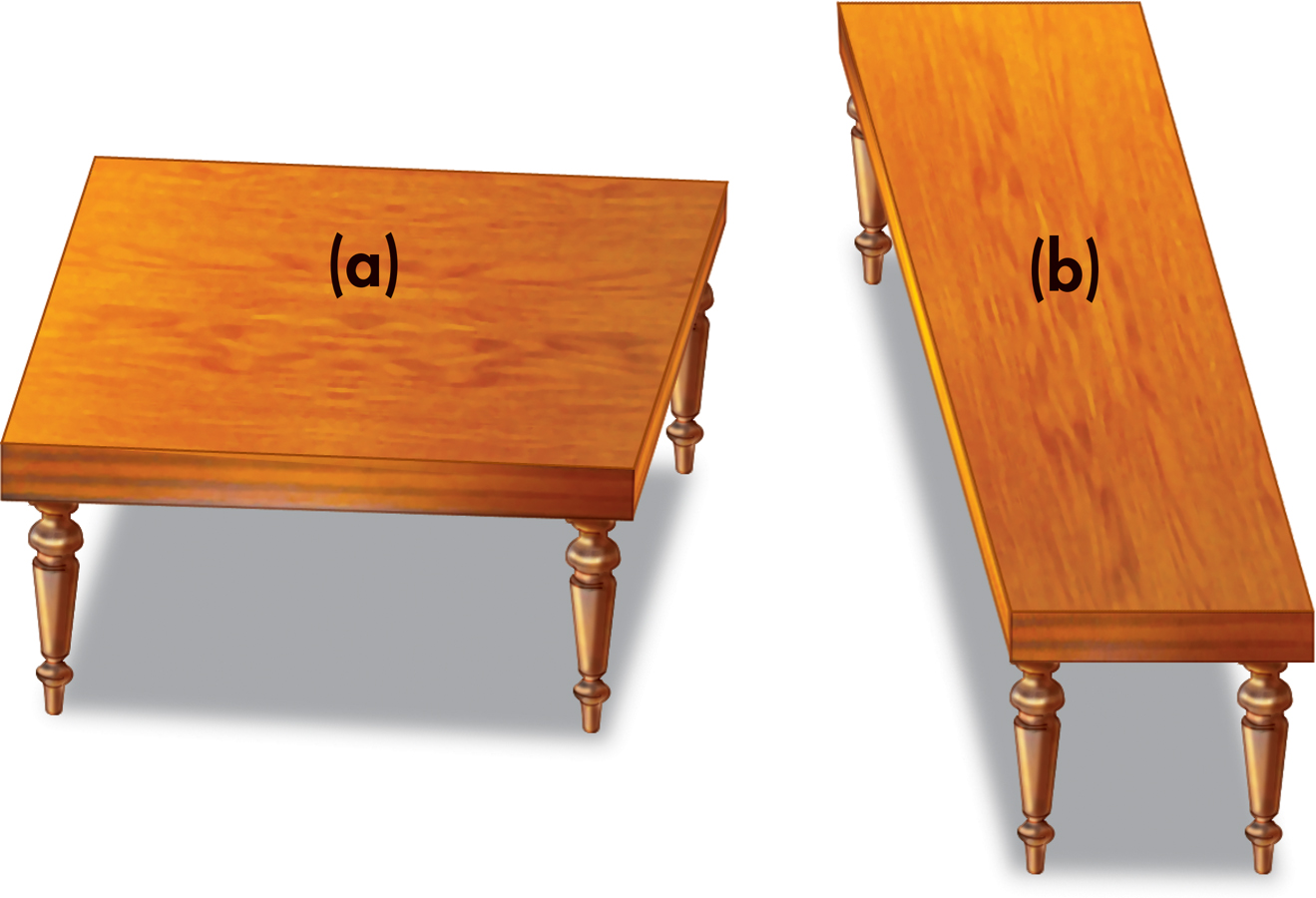3.6 Perceptual Illusions

KEY THEME
Perceptual illusions underscore the idea that we actively construct our perceptual representations of the world according to psychological principles.
KEY QUESTIONS
How can the Müller-Lyer and moon illusions be explained?
What do perceptual illusions reveal about perceptual processes?
What roles do perceptual sets, learning experiences, and culture play in perception?
Our perceptual processes are largely automatic and unconscious. On the one hand, this arrangement is mentally efficient. With a minimum of cognitive effort, we decipher our surroundings, answering important perceptual questions and making sense of the environment. On the other hand, because perceptual processing is largely automatic, we can inadvertently arrive at the wrong perceptual conclusion. When we misperceive the true characteristics of an object or an image, we experience a perceptual illusion.
perceptual illusion
The misperception of the true characteristics of an object or an image.
During the past century, well over 200 perceptual illusions have been discovered. One famous perceptual illusion is shown in FIGURE 3.18. The perceptual contradictions of illusions are not only fascinating but can also shed light on how the normal processes of perception guide us to perceptual conclusions. Given the basics of perception that we’ve covered thus far, you’re in a good position to understand how and why some famous illusions seem to occur.
The Müller-Lyer Illusion
Look at the center line made by the corners of the walls in (a) and (c) in FIGURE 3.19. Which line is longer? If you said (c), then you’ve just experienced the Müller-Lyer illusion. In fact, the two center lines are the same length, even though they appear to have different lengths. You can confirm that they are the same length by measuring them. The same illusion occurs when you look at a simple line drawing of the Müller-Lyer illusion, shown in parts (b) and (d) of FIGURE 3.19.

Müller-Lyer illusion
A famous visual illusion involving the misperception of the identical length of two lines, one with arrows pointed inward, one with arrows pointed outward.

The Müller-Lyer illusion is caused in part by visual depth cues that promote the perception that the center line in (c) is farther from you (Gregory, 1968; Rock, 1995). When you look at (c), the center line is that of a wall jutting away from you. When you look at drawing (d), the outward-pointing arrows create much the same visual effect—a corner jutting away from you. In FIGURE 3.19 (a) and (b), visual depth cues promote the perception of lesser distance—a corner that is jutting toward you.
Size constancy also seems to play an important role in the Müller-Lyer illusion. Because they are the same length, the two center lines in the photographs and the line drawings produce retinal images that are the same size. However, as we noted in our earlier discussion of size constancy, if the retinal size of an object stays the same but the perception of its distance increases, we will perceive the object as being larger. Previously, we demonstrated this with the afterimage of a light bulb that seemed much larger when viewed against a distant wall.
The same basic principle seems to apply to the Müller-Lyer illusion. Although all four center lines produce retinal images that are the same size, the center lines in images (c) and (d) are embedded in visual depth cues that make you perceive them as farther away. Hence, you perceive the center lines in these images as being longer, just as you perceived the afterimage of the light bulb as being larger when viewed on a distant wall.
Keep in mind that the arrows pointing inward or outward are responsible for creating the illusion in the Müller-Lyer illusion. Take away those potent depth cues and the Müller-Lyer illusion evaporates. You perceive the two lines just as they are—the same length.
The Moon Illusion

Another famous illusion is one you’ve probably experienced firsthand—the moon illusion. When a full moon is rising on a clear, dark night, it appears much larger when viewed on the horizon against buildings and trees than it does when viewed in the clear sky overhead. But the moon, of course, doesn’t shrink as it rises. In fact, the retinal size of the full moon is the same in all positions. Still, if you’ve ever watched the moon rise from the horizon to the night sky, it does appear to shrink in size. What causes this illusion?
moon illusion
A visual illusion involving the misperception that the moon is larger when it is on the horizon than when it is directly overhead.
Part of the explanation has to do with our perception of the distance of objects at different locations in the sky (Ozkan & Braunstein, 2010). Researchers have found that people perceive objects on the horizon as farther away than objects that are directly overhead in the sky. The horizon contains many familiar distance cues, such as buildings, trees, and the smoothing of the texture of the landscape as it fades into the distance. The moon on the horizon is perceived as being behind these depth cues, so the depth perception cue of overlap adds to the perception that the moon on the horizon is farther away.
The moon illusion also involves the misapplication of the principle of size constancy. Like the afterimage of the glowing light bulb, which looked larger on a distant wall, the moon looks larger when the perception of its distance increases. Remember, the retinal image of the moon is the same in all locations, as was the afterimage of the light bulb. Thus, even though the retinal image of the moon remains constant, we perceive the moon as being larger because it seems farther away on the horizon (Kaufman & others, 2007).
If you look at a full moon on the horizon through a cardboard tube, you’ll remove the distance cues provided by the horizon. The moon on the horizon shrinks immediately—and looks the same size as it does when directly overhead.
MIKE AND PERCEPTUAL ILLUSIONS

Perceptual illusions underscore the fact that what we see is not merely a simple reflection of the world, but our subjective perceptual interpretation of it. We’ve been developing and refining our perceptual interpretations from infancy onward. But what about Mike, who regained low vision after more than four decades of blindness?

Psychologist Ione Fine and her colleagues (2003) assessed Mike’s perceptual processing with a couple of perceptual illusions. For example, Mike was presented with an image containing illusory contours, shown on the left. It’s much like the more complex image we discussed in FIGURE 3.18. When asked, “What is the ‘hidden’ shape outlined by the black apertures?” Mike had no response. However, when the form was outlined in red, Mike immediately perceived the red square.
Now look at FIGURE 3.20. Which tabletop is longer? If you used your keen perceptual skills and confidently said (b), you’d be wrong. If you responded as Mike did and said that the two tabletops are of identical size and shape, you’d be correct. You can use a ruler or tracing paper to verify this. This illusion is referred to as the Shepard Tables, named after its creator, psychologist Roger Shepard (1990).
Why wasn’t Mike susceptible to this compelling visual illusion? Partly, it’s because he does not automatically use many of the depth perception cues we discussed earlier (Gregory, 2003). As psychologist Donald MacLeod explained, “Mike is impressively free from some illusions that beset normal vision, illusions that reflect the constructive processes involved in the perception of three-dimensional objects” (Abrams, 2002).
Although seeing is said to be believing, in the case of illusions, believing can lead to seeing something that isn’t really there. As Mike gets more perceptual practice with the world, it will be interesting to see if he learns to fall for the same illusions that most of us do.
Like any psychological process, perception can be influenced by many factors, including our expectations. In the final section of this chapter, we’ll consider how prior experiences and cultural factors can influence our perceptions of reality.